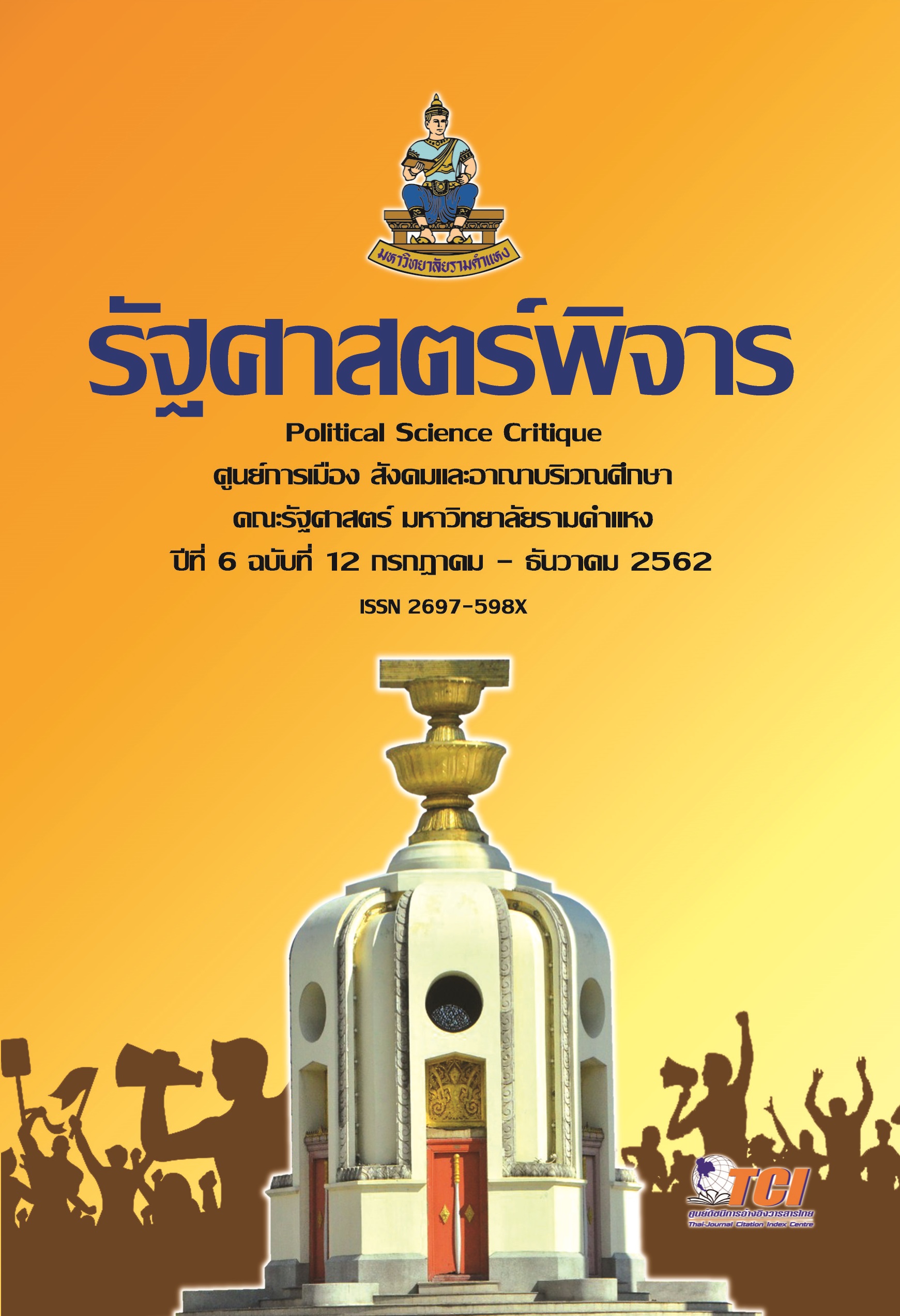Intelligibility of English on Signs in Tourist Attractions in Thailand
Keywords:
thai - english, signs, touristAbstract
Due to the fact that one of the main sources of Thailand’s income is from tourism, this paper focuses on the use of English on signs in 40 tourist attractions across Thailand. The research aims to find out to what extent the variety of English in Thailand, so-called Thai English, is intelligible to non-Thai people. If non Thai people cannot understand English used by Thai people well, why it is there? The study was drawn from 1,828 photos of Thai English signs. The signs were broadly divided into grammatical features and lexico-semantic features. Then, 30 signs were carefully selected and divided into three levels based on the degrees of the mistakes, namely, Level 1: no errors (socio-culturally unintelligible), Level 2: minor errors, and Level 3: major errors. Then the 30 items were made into an online questionnaire about the intelligibility of Thai English. The data were collected from 456 participants who were
asked to rate a Likert scale of comprehensibility ranging from 1 incompressible to 6 comprehensible. The results were based on the statistical analysis and interviews with 29 participants. The findings showed that, first, English messages with grammatical features could be more easily understood than those with lexico-semantic features. Second, regarding items in Level 1 (socio-culturally unintelligible) and Level 2 (minor errors), native speakers generally had higher mean scores of intelligibility than non-native speakers, because native speakers could negotiate the meanings of Thai English better. Nevertheless, third, when signs contained major errors (Level 3), being native speakers did not play a role, because it was difficult for non-Thai people to understand the messages anyway. Fourth, most of the English translations in Level 3 were done by translation software. The interview data revealed that translation software was not helpful in conveying meaning to the participants. It can be concluded that Thai English could be intelligible to non-Thai people to some extent. However, to have a better understanding of Thai English messages, international visitors should bring the contexts around the messages into account rather than focusing only on the literal meanings of the messages.
References
Backhaus, P. (2007). Linguistic Landscape: a Comparative
Study of Urban Multilingualism in Tokyo.
Clevedon: Multilingual Matters.
Baker, W. (2008). A Critical Examination of ELT in Thailand:
the Role of Cutural Awareness. RELC Journal, 39(1),
-146.
Bamgbose, A. (1998). Torn between the Norms: Innonations
in World Englishes. World Englishes, 17(1), 1-14.
Barbour, R. (2008). Introducing Qualitative Research: A
Student's Guide to the Craft of Doing Qualitative
Research. London: SAGE.
Blaxter, L., Hughes, C., & Tight, M. (2006). How to research.
Milton Keynes: Open University Press.
Brannen, J. (1992). Mixing methods : qualitative and
quantitative research. Aldershot: Avebury.
Crystal, D. (2003). English as a Global Language. Cambridge:
Cambridge University Press.
Denscombe, M. (2010). The good research guide : for
small-scale social research projects (4th ed.).
Maidenhead: Open University Press.
Denzin, N. K., & Lincoln, Y. S. (2005). The SAGE handbook of
qualitative research (3rd ed.). Thousand Oaks: Sage
Publications.
Dörnyei, Z. (2007). Research methods in applied linguistics:
quantitative, qualitative, and mixed
methodologies. Oxford: Oxford University Press.
Field, A. P. (2013). Discovering statistics using IBM SPSS
statistics: and sex and drugs and rock'n'roll. Los
Angeles, California: SAGE.
Firth, A. (1996). The Discursive Accomplishment of Normality
on "Lingua Franca" English and Conversation Analysis.
Journal of Pragmatics, 26, 237-259.
Flick, U. (2006). An introduction to qualitative research
(3rd ed.). London: SAGE.
Hammersley, M., & Atkinson, P. (2007). Ethnography (3 ed.).
London: Routledge.
Huebner, T. (2006). Bangkok's Linguistic Landscape:
Environmental Print, Codemixing and Language
Change. International Journal of Multilingualism,
(1), 31-51.
Immigration Bureau of Thailand. (2014). Statistics of
international visitors to Thailand. Retrieved from
http://www.immigration.go.th/nov2004/base.php?pag
e=stat
Johnson, B. R., Onwuegbuzie, A. J., & Turner, L. A. (2007).
Toward a Definition of Mixed Methods Research.
Journal of Mixed Methods Research 1(2), 112-133.
doi: 10.1177/1558689806298224
Kachru, B. B. (1985). Standards, Codification, and
Sociolinguistic Realism: Th English Language in the
Outer Circle. In R. Quirk & H. Widdowson (Eds.),
English in the World (pp. 11-30). Cambridge:
Cambridge University Press.
Kachru, B. B. (1989). Teaching World Englishes. Indian
Journal of Applied Linguistics, 15(1), 85-95.
Kachru, B. B. (1996). Past Imperfect: The other Side of English
in Asia. In M. Newbrook (Ed.), English is an Asian
Language: The Thai Context. Sydney: The
Macquarie Library Pty Ltd.
Mason, J. (2002). Qualitative researching (2nd ed.). London:
Sage.
Rossman, G. B., & Wilson, B. L. (1985). Numbers and Words:
Combining Quantitative and Qualitative Methods in a
Single Large-Scale Evaluation Study. Evaluation
Review, 9(5), 627-643.
Seargeant, P., Tagg, C., & Ngampramuan, W. (2012). Language
choice and addressivity strategies in Thai-English
social network interactions. Journal of
Sociolinguistics, 16(4), 510-531. Retrieved from
http://dx.doi.org/10.1111/j.1467-9841.2012.00540.x
Seidlhofer, B. (2005). Key Concepts in ELT: English as a lingua
franca. ELT Journal, 59(4), 339-341. Retrieved from http://eltj.oxfordjournals.org/content/59/4/339.full.pd
f+html
Smalley, W. A. (1994). Linguistic Diversity and National
Unity. Chicago: The University of Chicago Press.
The Commonwealth. (2013). Retrieved from
http://thecommonwealth.org/member-countries
The United Nations. (2014). Member States. Retrieved from
http://www.un.org/en/members/index.shtml
Travel & Leisure Magazine. (2013). World's Best Awards
Retrievedfrom http://www.travelandleisure.com
/worldsbest/2013/cities
Watkhaolarm, P. (2005). Think in Thai, write in English:
Thainess in Thai English literature. World Englishes,
(2), 145-158. doi:10.1111/j.1467-971X.2005.00399.x
Welman, C., Kruger, F., Mitchell, B., & Huysamen, G. K. (2005).
Research methodology. Cape Town; Oxford: Oxford
University Press.
Downloads
Published
How to Cite
Issue
Section
License

This work is licensed under a Creative Commons Attribution-NonCommercial-NoDerivatives 4.0 International License.
All contents and information in the manuscripts published by Journal of Political Science Critique are the authors’ opinions; thus, the authors take sole responsibility for any contents. The editorial board does not agree with or accept responsibility for the manuscripts.
All published articles, information, contents, pictures, or other things in Journal of Political Science Critique are Copyright by the Journal. All Rights Reserved. All contents may not be copied or duplicated in whole or part by any means without the prior written permission of Journal of Political Science Critique.



